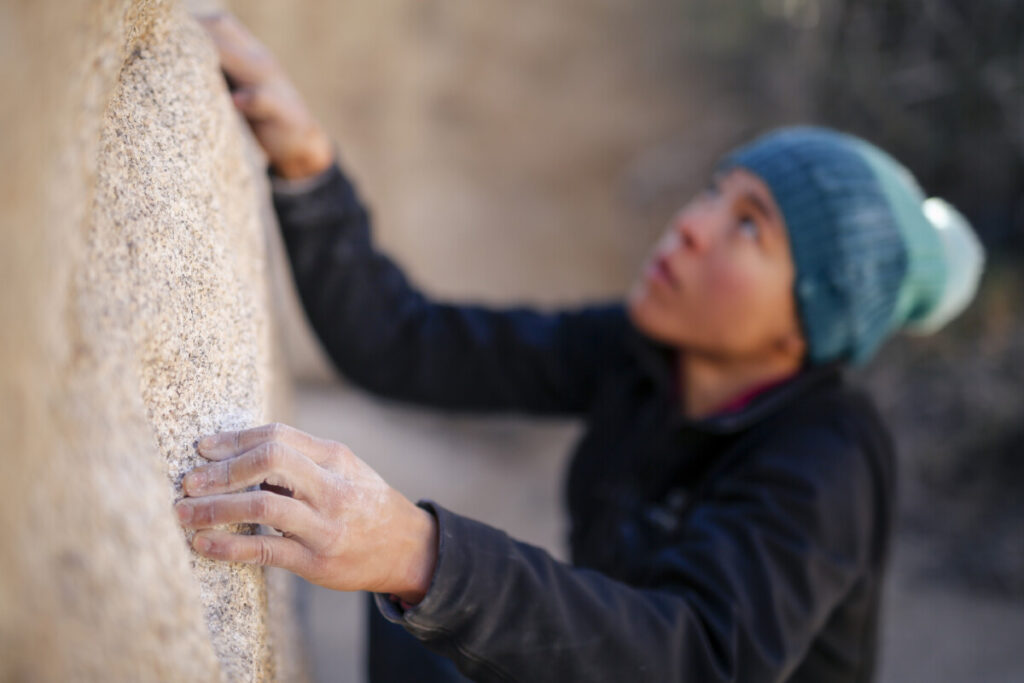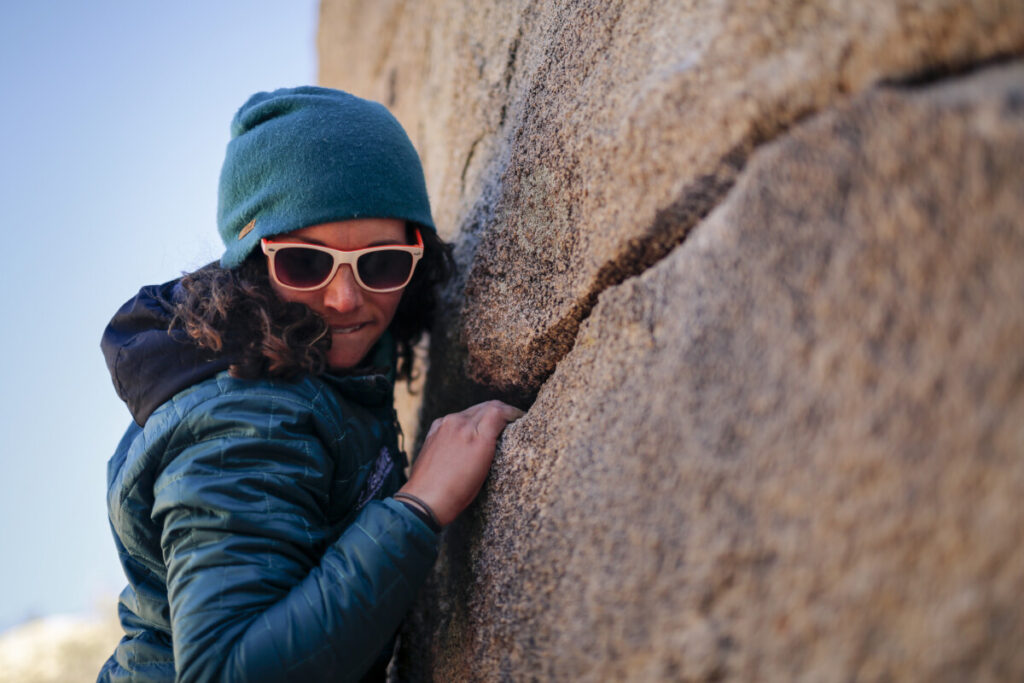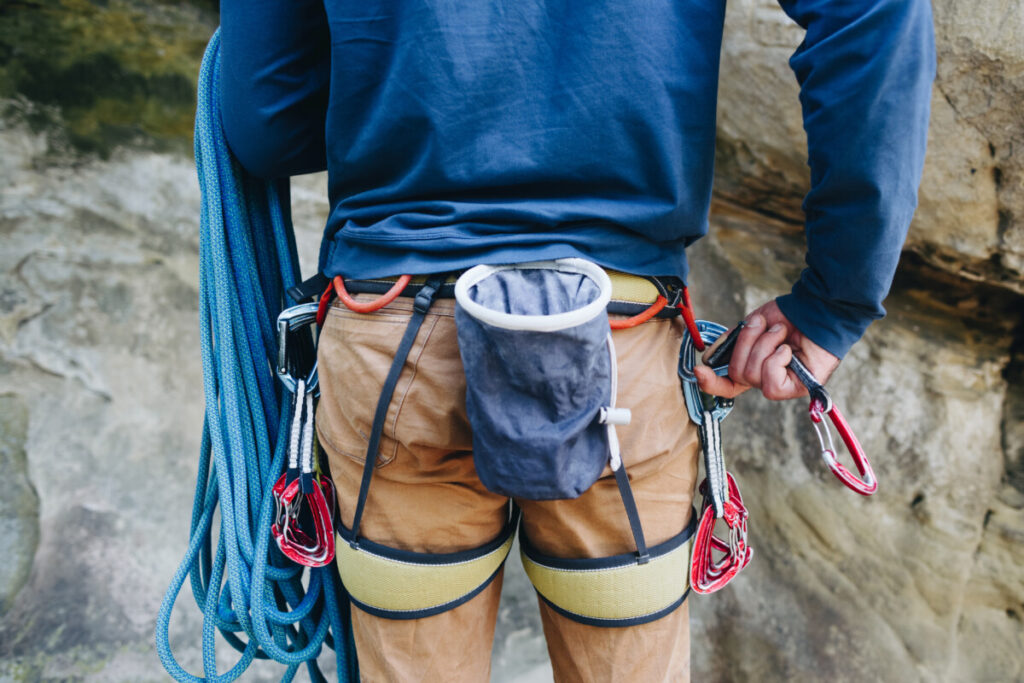
As the crag deepens its reach into the soul of the climber, the climbing season’s breadth expands into the fringes of cold weather. When the temperature drops, the rock can quickly feel like ice. Climbing in these conditions has its pros and cons. The dry cold stone offers noticeably better friction for crimps, slopers, jugs and foot placement—making it slightly easier to send tougher routes. Conversely, fingers quickly become numb, clumsy and potentially useless for providing the dexterous counter leveraging needed for effective climbing. While warm gloves are the first go-to in cold weather, technical climbing requires precise finger placement and maximum grip—abilities compromised while wearing gloves. So how do climbers keep their hands and fingers warm in cold weather?
To keep hands and fingers warm while climbing in cold weather, it is critical to prioritze core warmth, hydration, and blood circulation. Additionally, the creative use of handwarms help rock climbers customize their climbing based on climbing temperatures, personal tolerance and the route being climbed.
Below you’ll find 22 tips addressing each of the whole body components involved with keeping hands warm while climbing in the cold.
Maintaining core warmth

Maintaining a warm core temperature is critical when climbing in the cold. The body prioritizes blood circulation to warm core vitals. It’s all about heat transfer. As more energy is consumed and prioritized to heat the core, less energy and priority is left over to circulate and warm the body’s non vital extremities.
- Keep the neck warm. Perhaps the best and most affordable hand warmer is the nape of the neck. The nape of the neck is one of the warmest parts of the body. If kept warm, the nape of the neck can be used to warm your fingers by placing a hand on the back of the neck and looking up. The folds of neck skin quickly add warmth to the hands and fingers. Flipping up the collar on a secondary layer or wearing a neck warmer keeps the neck toasty warm.
- Wear a beanie or helmet. Though it is a myth that most of the body’s heat escapes through the head, it is still important to prevent as much heat loss as possible by keeping the head warm.
- Wear moisture wicking base layers. Moisture wicking underlayers help to keep the skin dry and to prevent cold moisture from sapping radiating heat from the body’s core.
- Wear a warm secondary layer. A fleece pullover or warm vest are ideal secondary layers that can help retain core heat. They can help wick moisture and do not get in the way when climbing.
- Warm coat or puffer. It may be impractical to wear a thick warm coat or puffer while climbing because it generally makes it difficult to move with agility and scope for proper hand and foot placement. It gets in the way or tends to snag when climbing a technical rock face. However, a warm coat can provide vital warmth when the climber is not in route or when belaying.
- Warm pants. When not climbing, throw on a pair of warm pants. Warm pants will block out the cold from the lower half of the body and will stimulate whole body circulation to help keep warm.
- Gloves. Even though they can’t be worn while climbing, don’t forget to bring gloves to wear while belaying or lounging. When belaying, make sure and use an assisted-breaking device such as the grigri—which can act as a backup to cold and less nimble hands and fingers.
Maintain Hydration
Maintaining hydration is important when involved with any outdoor activity. In cold weather, the body restricts blood supply to the extremities to be able to prevent excessive heat loss. As the blood vessels to the extremities contract, the blood pressure rises causing an increased amount of blood flow through the kidneys and an increased amount of water loss.
- Stay hydrated. In cold weather, the urge to hydrate may not be as intense as on a hot summer day. However, the body can still become dehydrated during cold weather activities. Having a deficiency of liquids can reduce blood volume, blood pressure, and the body’s ability to perform its metabolic functions properly of burning calories, creating energy, and circulating warmth throughout the body.
- Drink warm liquids. Drinking warm liquids not only help to stay hydrated, but also help the body stay warm—as little to no energy is needed to bring the liquid to body temperature. Hot coffee, chocolate, tea, or miso soup all work well to go down warm, and help the body maintain warmth.
- Pee. When the body gets cold, it restricts the blood flow to the extremities which causes the blood pressure to go up. The increased blood pressure causes more blood to be filtered through the kidneys and the kidneys subsequently create more urine. Relieving the body of excess urine relieves the body from having to waste energy warming excess fluid waste that no longer has purposeful use.
Increase Blood Circulation
When the heart rate is up, more calories are burned, and blood flow increases circulating more warmth throughout the entire body. In cold temperatures, increased circulation is one of the best ways to ensure that the extremities such as hands and fingers receive circulating warmth.
- Warm up before climbing. A few minutes of jumping jacks, burpees, and push-ups right before a climb can quickly get the heart rate up and increase blood circulation. Often, a rigorous climb can maintain the increased circulation and help prevent the extremities from icing up.
- Windmill circulation. If the fingers begin to chill while climbing, have the belayer “take”, or find a secure hold and windmill circulation to the fingers. The windmill motion forces blood to the very tips of the fingers and immediately warms them up. Once the climb is finished, windmill blood back to the fingers before replacing the gloves so the hands can be warmed before they are reinsulated.
- Supplements can aid circulation. L-Carnitine may help the body adapt to the cold. Capsaicin (cayenne pepper) may stimulate increased metabolism and increase the heat the body produces.
- Eat. Keeping the body working hard to break down foods requires calorie burning and creates warmth as the blood circulates. Eating healthy food and snacks while at the crag can help your body stay in heat mode.
Hand Warmers

The creative use of handwarmers can save the day at the crag on cold weather days. They are unobtrusive wherever they are stashed. And, handwarmers are relatively cheap—usually around a dollar per pair. However, they can often be found at a significant discount during the off season, at a discount grocer, outlet store or when buying them in bulk.
- Hand warmers in the chalk bag. Many climbers will throw a handwarmer or two ino the chalk bag to have an easy place to reach to warm the hands. Since reaching for the chalk bag is part of the climbing routine, warming the hands doesn’t require a change in technique.
- Hand warmers in an arm sleeve. Sliding a hand warmer just under the wrist while wearing an arm sleeve can help keep the blood warm that circulates the fingers.
- Rechargeable handwarmers in the chalk bag. They are much more bulky than disposable handwarmers and last about as long. However, they can be recharged for multiple uses. Some rechargeable handwarmers offer the capability to crank up the heat.
- Utilize the body’s natural hand warmers. The nape of the neck can offer just as much heat as a hand warmer and does not cost any money. Although blowing warm air onto the tips of the fingers, or throwing a fist into the armpit or groin can offer immediate warmth, these procedures can also add moisture to the fingers which may cause them to re-ice more quickly.
Other tips for staying warm while cold weather rock climbing
- Climb when the sun is shining. Even though the temperature may be freezing, the sun’s radiating heat can warm up the crag and help you stay warm. Even just a few degrees of added warmth can make a big difference.
- Keep climbing shoes warm. Keep climbing shoes tucked inside of warm layers so that they can be warm when laced onto the feet. Try to prevent getting the feet wet or muddy by having a tarp or mat to stand on at the base of a route.
- Keep fingers working and moving. Stress balls, hand grips, and portable hangboards can be a great way to maintain circulation to the fingers and keep them warm prior to climbing.
- Last but not least, Check the Weather. Knowing the specifics of the forecast will trigger the need to plan ahead and bring backup gear for sudden changes in the temperature. There is nothing worse than being chased from the crag because of a lack of foresight and inadequate preparations for sudden changes in the weather.
Cold stone can be very enjoyable to climb because of increased friction. Learning what it takes to stay warm is a skill that must be adapted at the individual level. Because everyone’s body regulates temperature and circulation differently, it is important to find what works best for you so that you too can enjoy some of the better climbing conditions that cold weather has to offer.